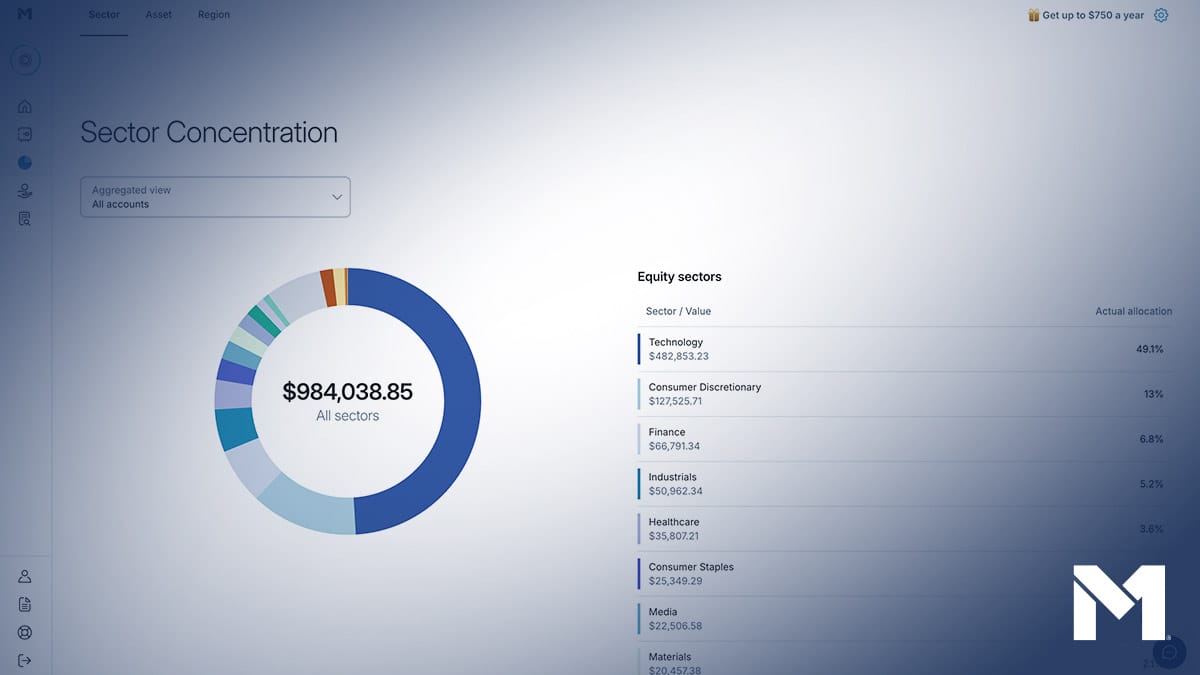The Most Common Mistakes in Portfolio Performance Evaluation

Many investors sabotage their long-term financial goals by falling prey to cognitive biases and technical errors when evaluating their portfolio’s performance. Research shows that the average investor consistently underperforms market indices, largely due to these evaluation mistakes. By understanding and avoiding these common pitfalls, you may be able to make more rational investment decisions and potentially improve your portfolio’s long-term performance.
Let’s explore the most frequent cognitive biases, technical mistakes, and emotional pitfalls that affect portfolio performance evaluation, along with practical strategies to overcome them.
Cognitive Biases in Performance Evaluation
Cognitive biases are mental shortcuts made by our brains. These patterns can lead to mistakes in our thinking and affect how we interpret information. When evaluating portfolio performance, these biases can skew our insights and lead to poor investment choices.
1. Recency Bias: Overweighting Recent Performance
Recency bias occurs when you give disproportionate weight to recent events when making decisions. When evaluating portfolio performance, this bias leads to overemphasizing the most recent returns while ignoring longer-term performance patterns. When it comes to benchmarking your portfolio, looking too short-term can lead to recency bias. That’s why it’s important to benchmark over long periods of time.
For example, if a particular fund or asset class has performed exceptionally well over the past few months, recency bias might lead you to believe this outperformance will continue indefinitely. This could prompt you to allocate more of your portfolio to this “hot” investment, potentially at the peak of its performance cycle.
Studies show that recency bias often leads investors to buy high and sell low—often reacting to market news and recent performance (source). To combat this, consider your portfolio’s performance over longer time periods (1-year, 3-year, 5-year, and 10-year) rather than focusing only on recent returns.
2. Confirmation Bias: Seeing What You Want to See
Confirmation bias is the tendency to search for, interpret, favor, and recall information that confirms one’s preexisting beliefs while giving disproportionately less consideration to alternative possibilities. When evaluating your portfolio, this bias can be particularly damaging.
An investor affected by confirmation bias might seek out positive news about companies they own while ignoring negative signals. For instance, if you’ve invested heavily in technology stocks because you believe in the sector’s growth potential, you might pay attention to news about technological innovations while dismissing reports about regulatory challenges or valuation concerns.
To avoid confirmation bias, deliberately seek out perspectives that challenge your investment thesis. When evaluating performance, consider both supporting and contradicting evidence about your investment choices, and be willing to adjust your strategy when the facts change.
When benchmarking performance, investors can fall prey to confirmation bias by cherry-picking favorable time periods or benchmarks while attributing success to skill and failures to external factors. To counter this, remember to standardize your benchmarking practices beforehand: pick the right benchmarks and consistent time horizons, and balanced reporting of all performance metrics.
3. Anchoring Bias: Getting Stuck on Initial Information
Anchoring bias occurs when investors rely too heavily on the first piece of information they encounter (the “anchor”) when making decisions. In portfolio evaluation, this often manifests as fixating on purchase prices or historical highs.
For example, if you purchased a stock at $100, you might use this price as an anchor for evaluating its performance, considering it a “good” investment only if it trades above $100. This anchoring prevents objective assessment of the stock’s current value and prospects.
Similarly, investors might anchor to peak portfolio values, creating unrealistic expectations during market downturns. To overcome anchoring bias, evaluate investments based on their current fundamentals and future prospects rather than historical price points.
Technical Mistakes in Performance Evaluation
Beyond cognitive biases, investors often make technical mistakes when evaluating portfolio performance, resulting in misleading conclusions and suboptimal decisions.
Mistake #1: Using Inappropriate Benchmarks
Benchmark error occurs when investors compare their portfolio’s performance to inappropriate standards. This mistake can lead to incorrect conclusions about how well your investments are performing.
An appropriate benchmark should match your portfolio’s:
- Region (e.g., U.S., international, emerging markets)
- Asset classes (stocks, bonds, cash, alternatives)
- Market capitalization (large, mid, or small-cap)
- Investment style (growth, value, blend)
For example, comparing a portfolio of U.S. large-cap stocks to the broad global market index would be misleading during periods when U.S. stocks outperform or underperform international markets. Similarly, comparing a conservative bond portfolio to an equity index would create unrealistic expectations.
To avoid benchmark error, select indices that closely align with your portfolio’s composition. For a diversified portfolio, consider using a blended benchmark that reflects your target asset allocation.
Mistake #2: Evaluating Performance Over Short Time Periods
One of the most common technical mistakes is focusing too much on short-term performance. Markets are inherently volatile in the short term, and short-term results often reflect temporary conditions rather than fundamental investment quality.
Different asset classes perform well at different times. For instance, U.S. large-cap stocks performed exceptionally well from 2009 to 2019 but lagged during the 2000-2009 period. Evaluating performance over short periods can lead to abandoning otherwise sound investments during temporary downturns or chasing recent winners.
As a general rule:
- Evaluate stocks and funds over the longest period you have available
- Consider full market cycles (including bull and bear markets)
This longer-term approach helps filter out market noise and provides a more accurate assessment of investment quality.
Mistake #3: Misunderstanding Relative Returns
Many investors focus solely on absolute returns (the percentage gain or loss) without considering relative returns (how the investment performed compared to an appropriate benchmark). This creates an incomplete picture of performance.
For example, a U.S. large-cap fund that earned a 14% annual return over ten years might seem impressive in absolute terms. However, if the S&P 500 delivered a 16% annual return during the same period, the fund actually underperformed its benchmark by a significant margin.
When evaluating performance, always compare your returns to relevant benchmarks to understand whether your investments are adding value. Additionally, consider other factors that affect net returns, such as:
- Expense ratios (higher fees reduce returns)
- Turnover rates (higher turnover can increase tax liability)
- Risk-adjusted returns (whether the returns compensate for the level of risk taken)
Emotional Pitfalls in Portfolio Assessment
Emotions often interfere with rational portfolio evaluation, leading to impulsive decisions that harm long-term returns.
1. Panic Selling During Market Downturns
Market volatility can trigger strong emotional responses, leading to panic selling during downturns. This reaction is often driven by loss aversion—the tendency to feel losses more acutely than equivalent gains.
J.P. Morgan’s Gudie to the Markets show that missing just a few of the market’s best days can dramatically reduce long-term returns. For example, an investor who remained fully invested in the S&P 500 from 2000-2019 would have earned a 6.06% annual return. But missing just the ten best days during this period would have reduced the return to 2.44%—less than half the original return.
Rather than making decisions based on short-term market movements, evaluate your portfolio against your long-term financial goals and risk tolerance. Market downturns are a normal part of investing, and maintaining perspective during these periods is essential for long-term success.
2. Chasing Performance
Performance chasing—investing heavily in whatever has performed well recently—is a common mistake driven by the fear of missing out (FOMO). This behavior often leads to buying high and selling low, negatively impacting overall returns.
Data shows that funds receiving the highest inflows from investors often subsequently underperform, as investors typically rush in after the period of strongest performance has already occurred. Furthermore, asset classes and investment styles move in and out of favor over time, making recent outperformance a poor predictor of future results.
When evaluating portfolio performance, focus on whether your investments are meeting your specific financial goals rather than how they compare to the latest market winners. Remember that diversification means that some portions of your portfolio will always underperform others in the short term. This is why it’s critical to select a benchmark that is appropriate for your investment goals, strategy, and risk tolerance. Picking a single stock or ETF that has had strong recent performance and doesn’t fit your goals, strategy, and risk profile may encourage performance chasing.
3. Overconfidence in Personal Investment Abilities
Overconfidence bias—the tendency to overestimate one’s knowledge and abilities—can lead investors to believe they can consistently outperform the market through active trading or stock selection.
According to the FINRA Investor Education Foundation’s 2022 report Investors in the United States, investors have positively biased perceptions of their own knowledge, with almost two-thirds of respondents (64 percent) rating themselves highly. Younger respondents were slightly more likely than older respondents to feel comfortable making investment decisions, and just as likely as older respondents to rate themselves highly on investing knowledge. However, more of the younger respondents failed to answer investing questions correctly, likely overestimating their own knowledge.
When evaluating your portfolio, maintain a realistic assessment of your abilities. Compare your long-term results to appropriate benchmarks and be honest about whether your active management decisions have added or subtracted value over time.
Practical Strategies to Avoid Common Evaluation Pitfalls
Understanding common mistakes is the first step; implementing practical strategies to avoid them is equally important.
Tip #1: Set Realistic Expectations
Unrealistic performance expectations often lead to disappointment and poor decision-making. Setting realistic expectations begins with understanding historical market returns and how different asset classes typically perform.
The average annual return for U.S. stocks has been approximately 10% from 1926-2022, but this average includes significant year-to-year volatility. Bond returns are typically lower but more stable. Your portfolio’s expected return should reflect your specific asset allocation.
When setting performance goals:
- Consider your portfolio’s asset allocation
- Account for inflation (historically around 3-4% annually)
- Recognize that returns are rarely linear
- Understand that periods of underperformance are normal
By setting realistic expectations, you can avoid overreacting to short-term performance variations that are well within normal ranges.
Tip #2: Implement a Disciplined Review Process
A structured, consistent approach to portfolio evaluation helps minimize the impact of cognitive biases and emotional reactions.
Consider implementing a quarterly review process that includes:
- Comparing portfolio performance to appropriate benchmarks
- Reviewing whether your asset allocation remains in line with your target
- Assessing whether your investments are still aligned with your goals
- Identifying any significant changes in your financial situation or risk tolerance
Avoid checking your portfolio too frequently, as daily or weekly monitoring can increase anxiety and lead to impulsive decisions. As financial advisor Danielle Harrison recommends, “Investing should be boring… look at your investments on a quarterly basis, which should be more than enough for most investors.”
Document your review process and decision criteria to create accountability and consistency over time.
Tip #3: Remember a Long-Term Perspective
Perhaps the most important strategy for avoiding performance evaluation mistakes is maintaining a long-term perspective. As Warren Buffett famously said, “We don’t have to be smarter than the rest. We have to be more disciplined than the rest.”
To maintain this discipline:
- Focus on your long-term financial goals rather than short-term market movements
- Remember that market volatility is normal and expected
- Distinguish between temporary market fluctuations and fundamental problems with your investment strategy
- Avoid making major portfolio changes based solely on recent performance
When you feel the urge to make significant changes based on recent market movements, consider Liz Ann Sonders’ advice: “Neither ‘get in’ nor ‘get out’ is an investing strategy… that’s gambling on moments in time… investing should always be a process over time.”
Conclusion
Remember that recognizing these potential pitfalls is the first step toward overcoming them. With awareness and discipline, you can improve your portfolio evaluation process and increase your chances of achieving your long-term financial goals.
Microsoft founder Bill Gates once said, “Most people overestimate what they can do in one year and underestimate what they can do in ten years.” The same principle applies to investing. Success doesn’t come from short-term wins; it comes from consistent application of sound principles over time.
SAIF-07182025-b5a6jhux



